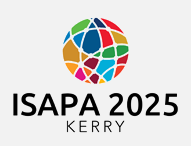Start Date
17-6-2025 3:00 PM
End Date
17-6-2025 4:30 PM
Abstract
Introduction
The word “inclusion” has been vaguely defined since its formulation, despite its ubiquity in physical education literature and practice (Imray & Colley, 2017). Without clear meaning, the term’s proliferation has created space for multiple understandings to the detriment of building capacity to meaningfully enhance the concept in social justice and educational contexts (Cobigo et al., 2012). To better understand its use, our purpose in this study was to analyze how “inclusion” is used in scholarship published in well-known physical education journals. This study advances ISAPA’s theme “Creating New Opportunities to Thrive,” by fostering awareness for stakeholders in education environments and improving inclusive strategies.
Methodology
We present findings from an archival content analysis (Krippendorf, 2018), analysing how “inclusion” was defined and used in four reputable journals in the field of physical education. Each article must have contained the word “inclusion” or a derivative (e.g., inclusive) and have a disability scope.
Results
Out of 68 articles systematically coded, 19 defined the word “inclusion.” Forty-nine articles did not define inclusion, rather, operationalized the word through inclusion strategies, policy, or perceptions of inclusion within school settings. Articles were further analysed through cross-comparison of article type, author country, and disability context.
Conclusions
Confusion around the meaning and use of “inclusion” may have trickle down effects on the practitioners who consume this scholarship when it comes to valuing and implementing strategies of inclusion in school settings. These findings represent a challenge to scholars in defining and openly discussing their operationalization of “inclusion” in their work.
Recommended Citation
Fesemyer, Jenna; Haegele, Justin; and Wilson, Wesley J., "Defining “Inclusion”: Scholars’ Use and Operationalization in Major Physical Education Journals" (2025). International Symposium of Adapted Physical Activity and International Symposium on Physical Activity and Visual Impairment and Deafblindness. 61.
https://sword.mtu.ie/isapa/2025/day2/61
Defining “Inclusion”: Scholars’ Use and Operationalization in Major Physical Education Journals
Introduction
The word “inclusion” has been vaguely defined since its formulation, despite its ubiquity in physical education literature and practice (Imray & Colley, 2017). Without clear meaning, the term’s proliferation has created space for multiple understandings to the detriment of building capacity to meaningfully enhance the concept in social justice and educational contexts (Cobigo et al., 2012). To better understand its use, our purpose in this study was to analyze how “inclusion” is used in scholarship published in well-known physical education journals. This study advances ISAPA’s theme “Creating New Opportunities to Thrive,” by fostering awareness for stakeholders in education environments and improving inclusive strategies.
Methodology
We present findings from an archival content analysis (Krippendorf, 2018), analysing how “inclusion” was defined and used in four reputable journals in the field of physical education. Each article must have contained the word “inclusion” or a derivative (e.g., inclusive) and have a disability scope.
Results
Out of 68 articles systematically coded, 19 defined the word “inclusion.” Forty-nine articles did not define inclusion, rather, operationalized the word through inclusion strategies, policy, or perceptions of inclusion within school settings. Articles were further analysed through cross-comparison of article type, author country, and disability context.
Conclusions
Confusion around the meaning and use of “inclusion” may have trickle down effects on the practitioners who consume this scholarship when it comes to valuing and implementing strategies of inclusion in school settings. These findings represent a challenge to scholars in defining and openly discussing their operationalization of “inclusion” in their work.

